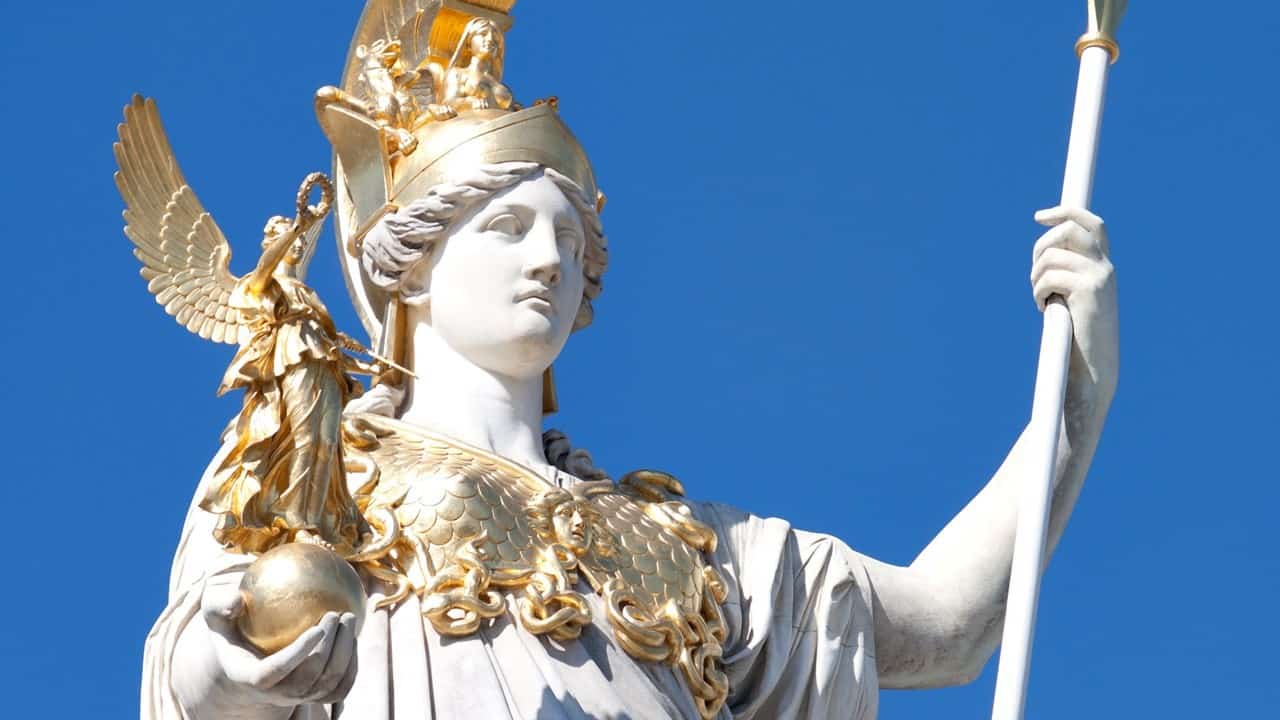Athena is among the most well-known Greek goddesses, revered for her wisdom, courage, and strength. She is often depicted as a fierce warrior, with a spear and shield in hand and a helmet on her head. Athena was also the goddess of crafts, weaving, and strategy and was often associated with the owl, considered a symbol of wisdom.
Athena played a significant role in Greek mythology, and her legend has been passed down through generations. According to legend, Athena was born fully grown and armored from the head of Zeus after he swallowed her mother, Metis. She was the favorite daughter of Zeus, and her intelligence and wisdom made her one of the most respected and revered goddesses in Greek mythology.
Today, Athena is still celebrated and admired for her many attributes, and her legacy lives on in the modern world. From literature to art, her influence can be seen in many different forms, and her story inspires people worldwide.
Athena, a Greek Goddess Birth Story
According to Greek mythology, Athena was born from the head of her father, Zeus. The story goes that Zeus had swallowed his wife, Metis, who was pregnant with Athena, fearing the child would be more powerful than him. However, Metis had already given birth to Athena inside Zeus’s stomach. When the time came, Zeus began to feel a tremendous headache, and Hephaestus, the god of fire and metalworking, split open Zeus’s head with an axe. Athena emerged fully grown, dressed in armor and holding a spear. This unique birth made Athena the only virgin goddess in Greek mythology.
As the goddess of wisdom, Athena was a patron of Athens and was known as the city’s protector. She was also associated with various other entities, such as warfare, handicrafts, and strategic warfare. Her birth story is one of the most iconic stories in Greek mythology, and it symbolizes the importance of wisdom and strategy over brute force.
Athena’s birth story is also significant because it highlights the role of women in Greek mythology. Even though Athena was born from Zeus’s head, she was still regarded as one of the Greek pantheon’s most potent and respected gods. This is a testament to the importance of women in ancient Greek society, and it shows that women could hold positions of power and influence, even in a male-dominated society.
In conclusion, Athena’s birth story is a compelling and iconic tale in Greek mythology. It highlights the importance of wisdom and strategy over brute force and symbolizes women’s role in ancient Greek society. Athena remains one of the most revered and respected goddesses in Greek mythology, and her legacy continues to inspire people today.
Powers and Symbols
Athena is one of the most important goddesses in Greek mythology. She is the goddess of wisdom, courage, inspiration, civilization, law and justice, strategic warfare, mathematics, strength, strategy, arts, crafts, and skill. Her powers and symbols are an integral part of her mythology, and they help to define her character and her place in the pantheon of Greek gods and goddesses.
Powers
Athena’s powers are vast and varied. She is known for her intelligence, wisdom, and strategic thinking, making her a formidable battle opponent. She is also known for her strength and courage, which make her a fierce protector of her people. Athena’s powers are often associated with her role as a goddess of war, but they also extend to the arts, crafts, and skill. She is often depicted as a patron of weavers, potters, and other craftsmen.
Symbols
Athena’s symbols are a reflection of her powers and her character. The most famous of these symbols is her shield, representing her role as a protector of her people. The shield is often adorned with the head of the Gorgon, a creature from Greek mythology that turned people to stone. This symbol is known as the Gorgoneion, which was believed to have the power to ward off evil.
Another important symbol of Athena is the olive tree. According to legend, Athena created the olive tree as a gift to the people of Athens, and it has since become a symbol of peace, prosperity, and wisdom. Athena is also associated with the owl, known for its wisdom and intelligence. The snake or serpent is another important symbol of Athena, representing her connection to the earth and the natural world.
Athena is also often depicted wearing a helmet, representing her warrior role. The helmet is often adorned with the image of a serpent or spider, both symbols of wisdom and intelligence. Finally, Athena is often depicted holding a trident, representing her power over the sea.
In conclusion, Athena’s powers and symbols are essential to her mythology and help define her character and place in Greek mythology. Her intelligence, wisdom, and strategic thinking make her a formidable opponent in battle, while her role as a patron of the arts, crafts, and skill makes her a beloved goddess of the people. Her symbols, including the shield, the olive tree, the owl, the snake, the helmet, and the trident, are all critical reflections of her powers and character.
Family
Athena is a Greek goddess, born from the head of her father, Zeus, the king of the gods. Her mother is said to be Metis, a Titaness who Zeus swallowed before Athena’s birth. This makes Athena the only child of Zeus, who was not born traditionally.
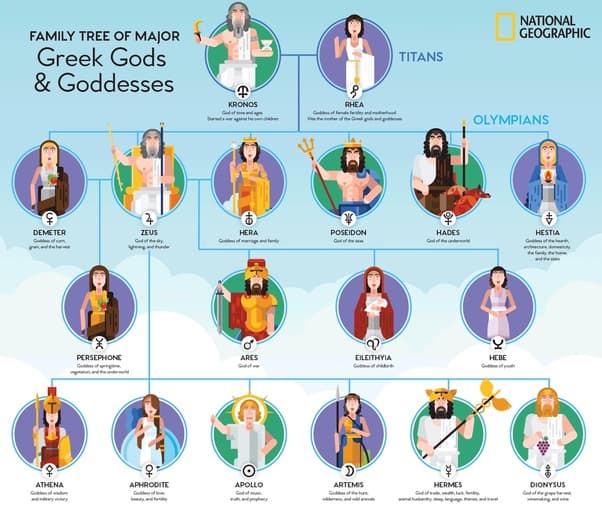
Parents
Zeus, the father of Athena, is known as the king of the gods and the god of thunder and lightning. He is one of the twelve Olympian gods and is often depicted as influential. Hera, the wife of Zeus, is the queen of the gods and the goddess of marriage and childbirth. She is often described as a jealous and vengeful goddess who punishes those who cross her.
Metis, the mother of Athena, is a Titaness known for her wisdom and cunning. She is often depicted as a goddess of wisdom and craftiness, and her name means “cunning” or “cleverness.”
Siblings
Athena has several half-siblings, as Zeus had many affairs outside his marriage to Hera. Ares, the god of war, is one of her half-brothers. He is often depicted as a violent and bloodthirsty god who enjoys battle. Hephaestus, the god of blacksmiths and fire, is another half-brother of Athena. He is often depicted as a skilled craftsman who creates weapons and armor for the gods. Poseidon, the god of the sea, is also a half-brother of Athena. He is often depicted as a powerful god who controls the waves and sea creatures.
In conclusion, Athena’s family is a complex web of relationships that includes powerful gods and goddesses. Her unique birth from the head of Zeus sets her apart from her siblings, and her mother, Metis, is often associated with wisdom and cunning. Athena’s siblings include Ares, Hephaestus, and Poseidon, each of whom has a unique role in Greek mythology.
Husband
Athena, the Greek goddess of wisdom and warfare, was known for her intelligence, strength, and strategic thinking. However, unlike many Greek goddesses, Athena never had a husband or a lover. Instead, she was a virgin goddess, and her focus was on her duties and responsibilities toward her people.
According to Greek mythology, Athena was born fully grown and armored from her father’s head, Zeus. He trusted her with many essential tasks because she was his favorite daughter. Athena was known to be fiercely independent and self-sufficient, and she did not need a husband or a partner to fulfill her duties.
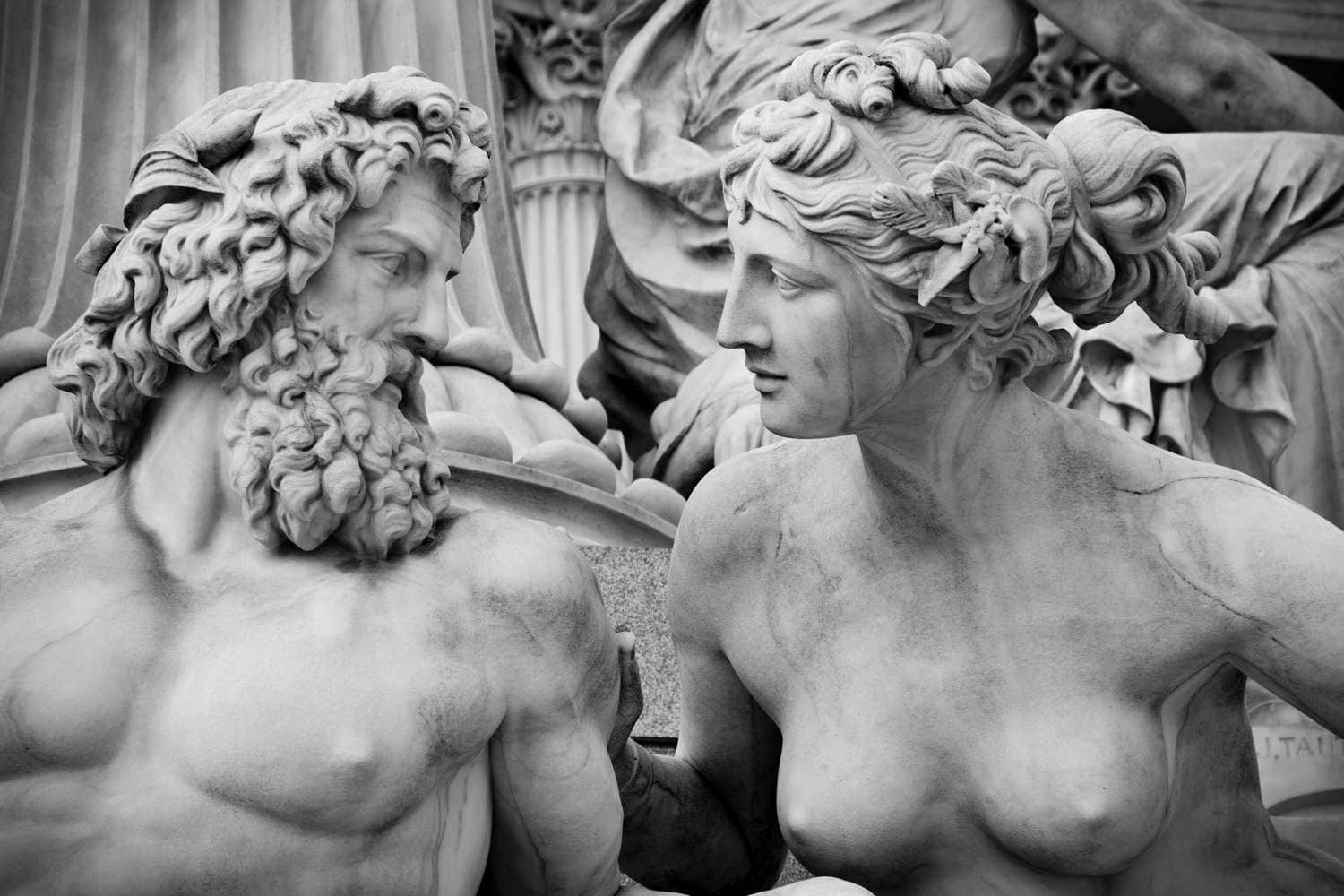
Athena had many close relationships with mortal men despite her lack of a husband, including heroes like Odysseus. She admired his intelligence and resourcefulness and often helped him on his quests and adventures. Athena played a crucial role in helping Odysseus return home after the Trojan War, using her wisdom and strategy to guide him through many challenges and obstacles.
Overall, while Athena may not have had a husband or a romantic partner, she was a strong and independent goddess respected and admired by many, including mortal men like Odysseus.
Children
Athena was the virgin goddess of wisdom, war, and crafts. Despite being a virgin goddess, she had several children in Greek mythology. One of her most famous children was Erichthonius, whom she raised as her own.
Erichthonius was born from the seed of Hephaestus, who tried to rape Athena but failed. Athena then wiped the seed off her leg and threw it on the ground, where it impregnated Gaia, the earth goddess. Gaia then gave birth to Erichthonius, who was half-human and half-snake.
Athena took care of Erichthonius and raised him in a box, warning him not to open it. However, curiosity improved, and he opened the box, revealing his proper form. Athena then placed him in her temple, where he became the protector of Athens.
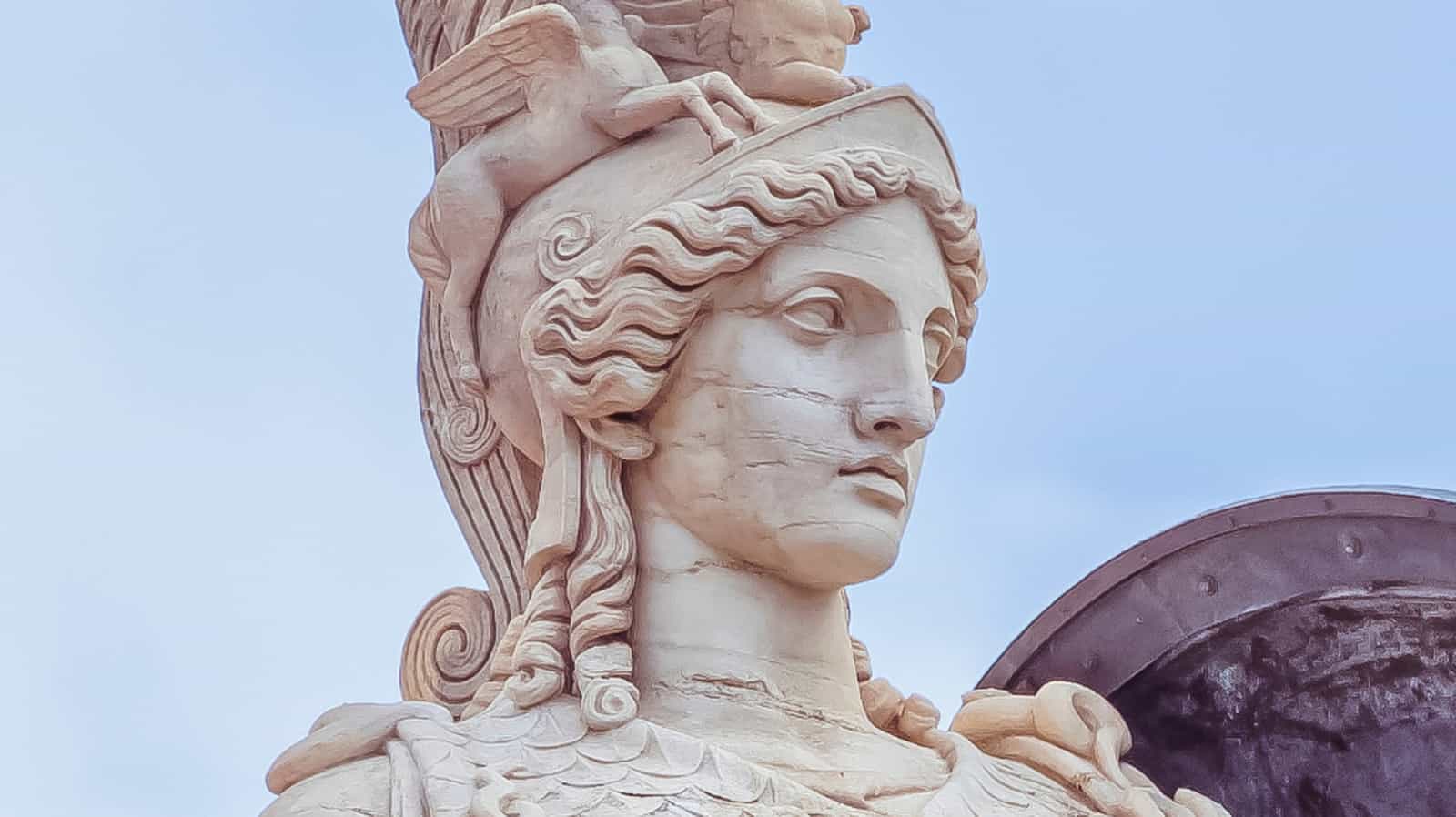
Another of Athena’s children was Minerva, the Roman equivalent of Athena. In Greek mythology, Minerva was born fully grown and armored from Jupiter’s head, similar to how Athena was born from Zeus’s head.
In conclusion, Athena had several children in mythology, including Erichthonius and Minerva. Despite being a virgin goddess, she played a maternal role in their upbringing and was a protective mother figure to them.
Myths
Athena, the Greek goddess of wisdom, war, and crafts, has a rich history filled with myths and legends. Her presence can be seen in many Greek heroes’ stories, wars, and battles.
One of the most famous myths involving Athena is the Trojan War. According to the Iliad, Athena played a pivotal role in helping the Greeks defeat the Trojans. She was also instrumental in helping Odysseus return home after the war in the Odyssey.
Athena also supported heroes such as Jason, Hercules, and Perseus. In the myth of Medusa, Athena aided Perseus in his quest to slay the Gorgon by giving him a shield to use as a mirror.
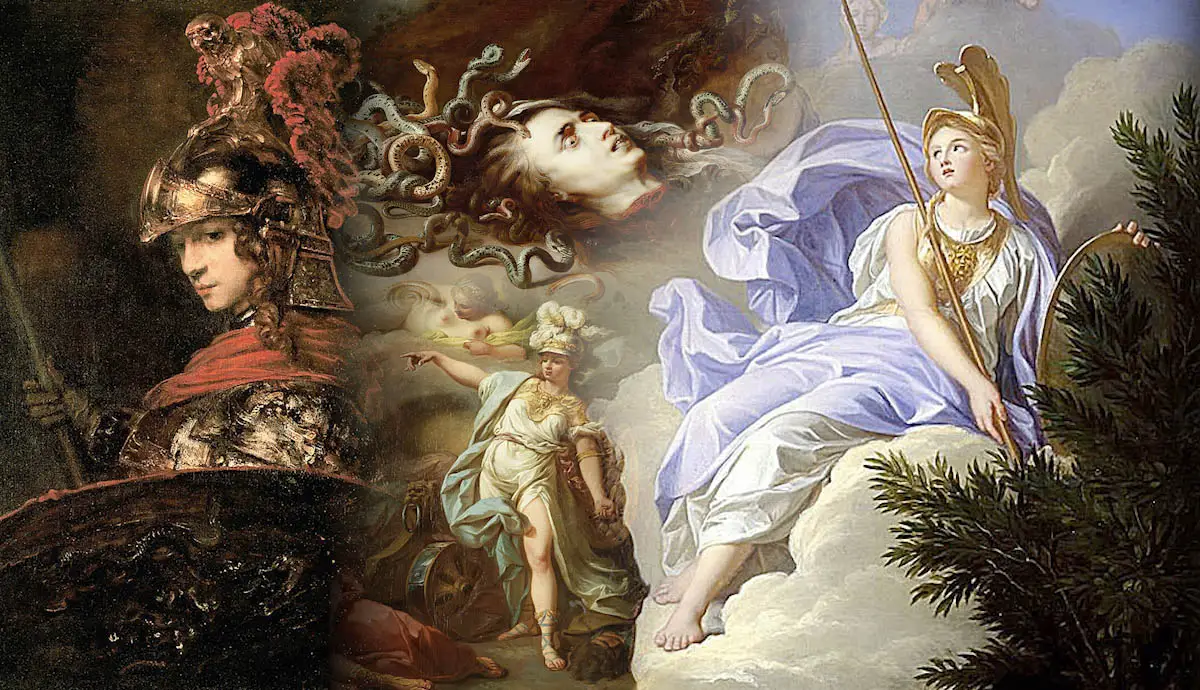
The city of Athens, named after Athena, was also home to many myths involving the goddess. The Parthenon, a temple dedicated to Athena, was built on the Acropolis in her honor. The myth of Arachne, a mortal weaver who challenged Athena to a weaving contest, also occurred in Athens.
In addition to her involvement in myths involving heroes and wars, Athena also played a role in the world’s creation, according to Hesiod’s Theogony. She was born fully grown and armored from the head of Zeus, making her one of the most potent and respected deities in Greek mythology.
Athena’s myths and legends continue to inspire and captivate people today, showcasing her strength, wisdom, and influence in Greek mythology.
Exciting Facts
Athena, the Greek goddess of wisdom, is one of the most fascinating deities in Greek mythology. Here are some exciting facts about this remarkable goddess.
- Epithets: Athena was known by many epithets, including Pallas, Parthenos, Ergane, and Promachos. These titles reflect her roles as a warrior goddess, a patron of handicrafts, and a protector of young women.
- Birth: According to legend, Athena was born fully grown and armored from her father’s head, Zeus. This miraculous birth symbolizes her association with wisdom and the mind.
- Weaving: Athena was also known as Athena Ergane, or “Athena the Worker,” because of her skill in weaving. She was said to have invented the loom and taught mortals how to weave.
- Scholars: Athena was the patron goddess of scholars and intellectuals. She was often depicted with an owl, which was a symbol of wisdom and knowledge.
- Courage and strength: Athena was a mighty warrior goddess known for her courage and strength. She was often depicted wearing armor and carrying a spear and shield.
- Victory: Athena was also associated with victory and was often depicted holding a wreath or a palm branch.
- Hymn: One of the most famous hymns to Athena is the Homeric Hymn to Athena, which describes her as a powerful and wise goddess who is both feared and revered.
- Birds: Athena was often associated with birds, especially the owl and the eagle. These birds were seen as symbols of wisdom and strength.
- Troy: Athena played a vital role in the Trojan War, siding with the Greeks and helping them to achieve victory over the Trojans.
- Festival: The Panathenaic Festival was held in honor of Athena every four years in Athens. The festival included athletic and artistic competitions and a procession to the Parthenon.
- Aphrodite: Athena and Aphrodite were rivals for the title of the most beautiful goddess. In one famous myth, they competed for the love of a mortal man named Paris, with Aphrodite ultimately winning the contest.
- Artemis and Hermes: Athena was often depicted in the company of her fellow Olympians, Artemis and Hermes. Together, they represented the three main aspects of ancient Greek society: wisdom, hunting, and commerce.
- Giant: Athena was said to have defeated the giant Enceladus, who had threatened the gods with his strength and size.
- Armour: Athena’s armor was said to have been forged by the god Hephaestus and was imbued with magical properties that made her invincible in battle.
- Handicraft: Athena was the patron goddess of handicrafts, including pottery, weaving, and metalworking.
In conclusion, Athena was a complex and fascinating goddess who embodied many aspects of ancient Greek society. From her role as a warrior goddess to her association with wisdom and handicrafts, Athena remains a powerful symbol of strength, courage, and knowledge.
Frequently Asked Questions
What is Athena the goddess of?
Athena is the Greek goddess of wisdom, courage, inspiration, civilization, law and justice, strategic warfare, mathematics, strength, strategy, arts, crafts, and skill. She is also known as the virgin goddess of the city because she was born fully grown and armored from the forehead of her father, Zeus, the king of the gods.
Why is Athena the most powerful goddess?
Athena is considered the most powerfull goddess because she possesses qualities that no other god or goddess has. She embodies wisdom, intelligence, and strategy, making her a formidable opponent in battle. She is also the patron goddess of Athens, the most powerful city-state in ancient Greece, which gave her immense power and influence.
Who is Athena’s lover?
Athena is one of the few Greek goddesses who did not have a lover or consort. She is known as the virgin goddess and vowed to remain a virgin forever. She is often depicted with an owl, her sacred animal and a symbol of her wisdom.
Who was Athena?
Athena was born fully grown and armored from the forehead of her father, Zeus. She is one of the twelve Olympian gods and goddesses, the daughter of Zeus and his first wife, Metis. She is often associated with wisdom, strategy, and warfare, and she is the patron goddess of Athens.
How is Athena usually portrayed?
Athena is usually portrayed as a tall, beautiful woman with piercing gray eyes and long, curly hair. She is often depicted wearing a helmet and carrying a shield, spear, and aegis, a protective shield or breastplate. She is also often accompanied by an owl, her sacred animal.
Where did Athena live?
Athena is associated with the city of Athens, named after her. She is the city’s patron goddess, and she was believed to reside in the Parthenon, a temple dedicated to her. The Parthenon was built on the Acropolis, a hill overlooking the city, and it was one of the most important religious and cultural centers in ancient Greece.

